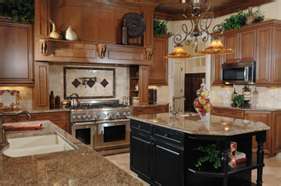What Kind Of Stone Should You Select For Your Pavers?
Natural stone pavers are generally placed in various ways, bettering a household’s visual attractiveness and improving its worth. There are plenty of varieties of stone you can usewhich you can purchase at tile stores, and each provides its own set of advantages. Despite the fact that paving with natural stone surfaces has been in existence for centuries, it remains a vital element of contemporary design.
In this posting, we shall present the advantages offered by a number of resources. You can expect to discover the specific properties of travertine, granite, slate, and sandstone, and exactly how each and every one may provide a distinct overall tone to the room or outside environment you may have in mind
The following particulars will help you to establish which rock is the most appropriate for the job, given your objectives.
Advantages Of Utilizing Travertine Pavers
A big benefit of travertine is that its natural attributes help it to remain cool when subjected to warm temperatures.
Travertine also creates more friction than various other natural stone surfaces; this cuts down the probability of slipping, even if the surface is damp.
The material is extremely strong. This will make it far more resistant to foot and vehicle traffic along with rain, wind, and other variables. While it might wear away a bit over time, deterioration is limited. Also, the color of the stone, which could range between a creamy tan to a rich golden-red, is just as resistant against fading.
The Upside Of Utilizing Granite Pavers
Granite is among the toughest natural stone materials readily available, which makes it particularly ideal for out of doors pavers. Its density can make it immune to break down coming from weather conditions and traffic (foot and vehicle), even during harsh situations. It can also help to reduce deterioration, such as chips and breaks.
Much like travertine, granite stays relatively cold in hot weather. This is because of the fact that it soaks in minimal heat. Its cool temperature makes it a good fit for areas in which folks walk without shoes.
The rock has a speckled visual appeal, which gives it a classic top quality. This makes it perfect for applications that call for a high-end appearance, for example near fountains or within foyers.
The Upside Of Utilizing Slate Pavers
Among the distinctive facets of slate is its irregular surface area. The variance in thickness provides it with an all-natural slip resistance. Because of this, it’s often used in places that are subjected to dampness; this may include portions of walkways in close proximity to sprinklers, pool surroundings, and possibly even restrooms.
Another advantage of slate is its wide range of colors. Pavers may be installed in tones which range from black and red to blue and green. The shade of every single tile is unique, which increases its natural visual beauty.
This natural stone is widely used for indoor applications because of its texture, color, and informal visual appeal. It provides a smooth fit for lavatories, kitchens, and indoor patios.
Benefits Of Using Sandstone Pavers
Sandstone is comprised of sedimentary rock. It forms when natural materials in the sea and sand erode and accumulate into a sturdy mass. Considerable pressure and heat cause the materials to bond with time, and ultimately form stone. Even though sandstone is long lasting, it’s also the softest natural stone among those talked about in this discussion
For this reason, it’s much less suited to driveways and other high-traffic areas, but perfect for areas exposed to much less severe conditions.
A distinguishing characteristic of sandstone is that the material contains striated patterns. This provides its surface area a unique visual effect not seen with some other kinds of natural stone. Additionally, the colors span an assortment, providing conventional beiges and tans to non-traditional hues, including pink and green.
Each of the natural stone surface types referred to above can be used for pavers – both inside and outside. Every one of them provide a decorative component that may improve the appearance of any room or outdoor space where they’re set up
But it is essential to recognize their particular strengths and characteristics to choose the material that’s most suitable for the job you’ve got in mind.





